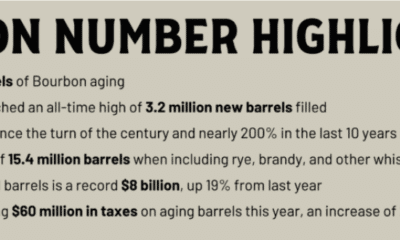News from the South - Alabama News Feed
Facial recognition in policing is getting state-by-state guardrails • Alabama Reflector
Facial recognition in policing is getting state-by-state guardrails
by Paige Gross, Alabama Reflector
February 1, 2025
In January 2020, Farmington Hills, Michigan resident Robert Williams spent 30 hours in police custody after an algorithm listed him as a potential match for a suspect in a robbery committed a year and a half earlier.
The city’s police department had sent images from the security footage at the Detroit watch store to Michigan State Police to run through its facial recognition technology. An expired driver’s license photo of Williams in the state police database was a possible match, the technology said.
But Williams wasn’t anywhere near the store on the day of the robbery.
GET THE MORNING HEADLINES.
Williams’ case, now a settled lawsuit which was filed in 2021 by the American Civil Liberties Union and Michigan Law School’s Civil Rights Litigation Initiative, was the first public case of wrongful arrest due to misuse of facial recognition technology (FRT) in policing.
But the case does not stand alone. Several more documented cases of false arrests due to FRT have come out of Detroit in the years following Williams’ arrest, and across the country, at least seven people have been falsely arrested after police found a potential match in the depths of FRT databases.
Williams’ lawsuit was the catalyst to changing the way the Detroit Police Department may use the technology, and other wrongful arrest suits and cases are being cited in proposed legislation surrounding the technology. Though it can be hard to legislate technology that gains popularity quickly, privacy advocates say unfettered use is a danger to everyone.
“When police rely on it, rely on them, people’s lives can be turned upside down,” said Nate Wessler, one of the deputy directors of the Speech, Privacy and Technology Project at the national ACLU.
How are police using FRT?
Facial recognition technology has become pervasive in Americans’ lives, and can be used for small, personal tasks like unlocking a phone, or in larger endeavors, like moving thousands of people through airport security checks.
The technology is built to assess a photo, often called a probe image, against a database of public photos. It uses biometric data like eye scans, facial geometry, or distance between features to assess potential matches. FRT software converts the data into a unique string of numbers, called a faceprint, and will present a set of ranked potential matches from its database of images.
When police use these systems, they are often uploading images from a security camera or body-worn camera. Popular AI company Clearview, which often contracts with police and has developed a version specifically for investigations, says it hosts more than 50 billion facial images from public websites, including social media, mugshots and driver’s license photos.
Katie Kinsey, chief of staff and tech policy counsel for the Policing Project, an organization focused on police accountability, said that she’s almost certain that if you’re an adult in the U.S., your photo is included in Clearview’s database, and is scanned when police are looking for FRT matches.
“You’d have to have no presence on the internet to not be in that database,” she said.
The use of FRT by federal law enforcement agencies goes back as long as the technology has been around, more than two decades, Kinsey said, but local police departments began using it in the last 10 years.
Usually, police are using it in the aftermath of a crime, but civil liberties and privacy concerns come from the idea that the technology could be used to scan faces in real time, with geolocation data attached, she said. Kinsey, who often meets with law enforcement officers to develop best practices and legislative suggestions, said she believes police forces are wary of real-time uses.
Boston Police attempted to use it while searching for the suspects in the 2013 Boston Marathon bombing, for example, but grainy imaging hindered the technology in identifying the culprits, Kinsey said.
Wrongful arrests
FRT’s role in wrongful arrest cases usually come from instances where police have no leads on a crime other than an image captured by security cameras, said Margaret Kovera, a professor of psychology at the John Jay College of Criminal Justice and an eyewitness identification expert.
Before the technology was available, police needed investigative leads to pin down suspects — physical evidence, like a fingerprint, or an eyewitness statement, perhaps. But with access to security cameras and facial recognition technology, police can quickly conjure up several possible suspects that have a high likelihood of a match.
With millions of faces in a database, the pool of potential suspects feels endless. Because the technology finds matches that look so similar to the photo provided, someone choosing a suspect in a photo array can easily make a wrong identification, Kovera said. Without further investigation and traditional police work to connect the match chosen by the technology to a crime scene, the match is useless.
“You’re going to up the number of innocent people who are appearing as suspects and you’re going to decrease the number of guilty people,” Kovera said. “And just that act alone is going to mess up the ratio of positive identifications in terms of how many of them are correct and how many of them are mistaken.”
In the seven known cases of wrongful arrest following FRT matches, police failed to conduct sufficient followup investigation, which could have prevented the incidents. One man in Louisiana spent a week in jail, despite being 40 pounds lighter than a thief allegedly seen in surveillance footage. A woman who was eight months pregnant in Detroit was held in custody for 11 hours after being wrongfully arrested for carjacking, despite no mention of the carjacker appearing pregnant.
When Williams was arrested in January 2020, he was the ninth-best match for the person in the security footage, Michael King, a research scientist with the Florida Institute of Technology’s (FIT) Harris Institute for Assured Information, testified in the ACLU’s lawsuit. And detectives didn’t pursue investigation of his whereabouts before making the arrest.
Detroit police used the expired license image in a photo array presented to a loss-prevention contractor who wasn’t present at the scene of the crime. The loss prevention contractor picked Williams as the best match to the security cameras. Without further investigation of Williams’ whereabouts in October 2018, Detroit Police arrested him and kept him in custody for 30 hours.
The lawsuit says Williams was only informed after several lines of questioning that he was there because of a match via facial recognition technology. As part of the settlement, which Williams reached in the summer of 2024, Detroit Police had to change the way it uses facial recognition technology. The city now observes some of the strictest uses of the technology across the country, which is legislated on a state-by-state basis.
Police can no longer go straight from facial recognition technology results to a witness identification procedure, and they cannot apply for an arrest warrant based solely on the results of a facial recognition technology database, Wessler said. Because there can be errors or biases in the technology, and by its users, guardrails are important to protect against false arrests, he said.
Emerging laws
At the start of 2025, 15 states — Washington, Oregon, Montana, Utah, Colorado, Minnesota, Illinois, Alabama, Virginia, Maryland, New Jersey, Massachusetts, New Hampshire, Vermont and Maine — had some legislation around facial recognition in policing. Some states, like Montana and Utah, require a warrant for police to use facial recognition, while others, like New Jersey, say that defendants must be notified of its use in investigations.
At least seven more states are considering laws to clarify how and when the technology can be used — lawmakers in Georgia, Hawaii, Kentucky, Massachusetts, Minnesota, New Hampshire and West Virginia have introduced legislation.
Like all AI technologies, facial recognition can have baked-in bias, or produced flawed responses. FRT has historically performed worse on groups of Black faces than on white, and has shown gender differences, too. AI is trained to get better over time, but people seem to think that simply by involving humans in the process, we’ll catch all the problems, Wessler said.
But humans actually tend to have something called “automation bias,” Wessler said — “this hardwired tendency of people to believe a computer output’s right as many times as you tell somebody the algorithm might get it wrong.”
So when police are relying on facial recognition technology as their primary investigative tool, instead of following older law enforcement practices, it’s “particularly insidious” when it goes wrong, Wessler said.
“I often say that this is a technology that is both dangerous when it works and dangerous when it doesn’t work,” Wessler said.
Kinsey said in her work with the Policing Project, she’s found bipartisan support for placing guardrails on police using this technology. Over multiple meetings with privacy advocates, police forces, lawmakers and academics, the Policing Project developed a legislative checklist.
It outlines how police departments could use the technology with transparency, testing and standards strategies, officer training, procedural limits and disclosure to those accused of crimes. It also says legislation should require vendors to disclose documentation about their FRT systems, and that legislation should provide ways to address violations of their use.
The Policing Project also makes similar recommendations for congressional consideration, and while Kinsey said she does believe federal guidelines are important, we may not see federal legislation passed any time soon. In the meantime, we’ll likely continue to see states influencing each other, and recent laws in Maryland and Virginia are an example of a broad approach to regulating FRT across different areas.
Kinsey said that in her meetings with police, they assert that the technologies are essential to crime solving. She said she believes there is space for FRT, and other technologies used by police like license plate readers and security cameras, but that doing so unfettered can do a lot of harm.
“We think some of them can absolutely provide benefits for solving crime, protecting victims,” Kinsey said. “But using those tools, using them according to rules that are public, transparent and have accountability, are not mutually exclusive goals. They can actually happen in concert.”
YOU MAKE OUR WORK POSSIBLE.
Alabama Reflector is part of States Newsroom, a nonprofit news network supported by grants and a coalition of donors as a 501c(3) public charity. Alabama Reflector maintains editorial independence. Contact Editor Brian Lyman for questions: info@alabamareflector.com.
The post Facial recognition in policing is getting state-by-state guardrails • Alabama Reflector appeared first on alabamareflector.com
News from the South - Alabama News Feed
White House announces tariffs on products from Canada, Mexico, China • Alabama Reflector
White House announces tariffs on products from Canada, Mexico, China
by Jennifer Shutt, Alabama Reflector
January 31, 2025
Canada, Mexico and China are major export destinations for Alabama businesses.
WASHINGTON — President Donald Trump plans to implement tariffs on Canada, Mexico and China on Saturday, potentially starting off a trade war that would likely lead to price increases on groceries and numerous other products.
White House press secretary Karoline Leavitt said during a briefing Friday that Trump will place 25% tariffs on goods coming into the United States from Canada and Mexico, and a 10% tariff on imports from China. Tariffs are paid by businesses bringing goods into the United States from other countries and they often pass on the increase in costs to consumers.
“The tariffs are incoming tomorrow on Canada and the reason for that is because both Canada and Mexico have both allowed an unprecedented invasion of illegal fentanyl that is killing American citizens and also illegal immigrants into our country,” Leavitt said.
Trump hasn’t yet decided if he will later implement tariffs on the European Union, made up of 27 countries, according to Leavitt.
“I won’t get ahead of the president on tariffs when it comes to the European Union,” she said.
Trump said later Friday from the Oval Office that he wasn’t using the tariffs as a negotiating tool, but as a way to raise revenue for the federal government and bring attention to fentanyl flowing into the country.
“We’re not looking for a concession. We’ll just see what happens,” Trump said.
The new tariffs will be stacked on top of existing tariffs, he said.
Trump said he planned to add additional tariffs at some point on computer chips and “things associated with chips,” oil and gas, steel, aluminum, copper, pharmaceuticals and “all forms of medicine.”
Trump said he will likely implement the oil and gas tariffs on Feb. 18, but didn’t provide dates for the other tariffs.
Trump brushed aside a question about how tariffs would impact prices, saying he was elected to reduce inflation. He said he wasn’t concerned about the stock market’s reaction on Friday afternoon to the impending tariffs.
Many economists, including those at conservative think tanks, like the American Enterprise Institute, have warned against broadly applying tariffs in this way.
Phil Gramm, former Republican chairman of the Senate Banking Committee and nonresident senior fellow at AEI, and Larry Summers, former Treasury Secretary during the Clinton administration, wrote an op-ed published by the Wall Street Journal on Thursday urging Trump not to implement tariffs.
“Our united opposition to non-defense-related tariffs is based not on our faith in free trade but on evidence that tariffs are harmful to the economy,” they wrote.
“Protective tariffs distort domestic production by inducing domestic producers to commit labor and capital to produce goods and services that could have been acquired more cheaply on the international market,” Gramm and Summers wrote. “That labor and capital are in turn diverted from producing goods and services that couldn’t be acquired more cheaply internationally. In the process, productivity, wages and economic growth fall while prices rise. Tariffs and the retaliation they bring also poison our economic and security alliances.”
Leavitt said during the press briefing that only Trump could decide whether he would eventually lift or alter the tariffs, while brushing aside the potential impacts to the U.S. economy.
The U.S. Department of Agriculture’s Economic Research Service writes on its website that Canada and Mexico “are the United States’ first and third largest suppliers of agricultural products (averaging $30.9 billion and $25.5 billion in 2017–21, respectively).
“Mexico supplied the United States with 31 percent of imported horticultural products including fruit, vegetables, and alcoholic beverages. Canada is also a source of horticultural products, as well as grains, and meats.”
The Office of the United States Trade Representative writes on its website that the U.S. imported $562.9 billion worth of goods from China during 2022.
U.S. agricultural exports to China, which could be impacted by retaliatory tariffs, totaled $36.4 billion during fiscal year 2022, according to the USDA’s Foreign Agricultural Service.
“U.S. exports have returned to trend growth experienced since the People’s Republic of China’s (PRC) accession to the World Trade Organization (WTO) and in the last 2 years the United States has witnessed record export values to China for soybeans, corn, beef, chicken meat, tree nuts, and sorghum. Cotton exports to China have also rebounded, propelled by strong demand. All these products are major contributors to the U.S. farm economy.”
Ashley Murray contributed to this report.
Last updated 4:27 p.m., Jan. 31, 2025
Alabama Reflector is part of States Newsroom, a nonprofit news network supported by grants and a coalition of donors as a 501c(3) public charity. Alabama Reflector maintains editorial independence. Contact Editor Brian Lyman for questions: info@alabamareflector.com.
The post White House announces tariffs on products from Canada, Mexico, China • Alabama Reflector appeared first on alabamareflector.com
News from the South - Alabama News Feed
News 5 Now at 8 | January 31, 2025
SUMMARY: News 5 Now, hosted by Bill Riy, covers key stories including Mississippi Governor Tate Reeves’ State of the State address, announcing the state’s economic growth with over $32 billion in investments. A scam alert warns of fake tickets being sold for the Order of Inca ball. A 70 lb loggerhead sea turtle, Josie, was released back into the Gulf after rehabilitation. Senior Bowl practices ended with top players like Riley Leonard and Shamar James preparing for the game. The first Mardi Gras parade kicks off in Dauphin Island, with a superhero and villain theme. Local events and traffic disruptions also make headlines.
Someone is selling bogus Mardi Gras ball tickets, A seventy-pound loggerhead sea turtle named Josie was released back into the Gulf and the first parade of the season gets ready to roll on Dauphin Island.
News from the South - Alabama News Feed
Gambling bill prospects uncertain as Alabama legislators return for 2025 session • Alabama Reflector
Gambling bill prospects uncertain as Alabama legislators return for 2025 session
by Ralph Chapoco, Alabama Reflector
January 31, 2025
Prospects for bills addressing gambling in Alabama in the 2025 legislative session remain unclear even after legislators have had ongoing discussions among themselves for the past several months in the offseason.
Lawmakers had protracted discussions about the provisions they would like to include as part of the gambling package, so much so that they have the different elements laid out, but finalizing a complete package, one that would get the required votes, remains an open question.
“The question is, which cut and paste would get a vote and which one loses a vote,” said Sen. Greg Albritton, R-Atmore, chair of the Senate’s General Fund budget committee who had been leading the efforts to introduce a gambling bill in the Senate. “We have got to find the magic combination that gains us four and loses two.”
GET THE MORNING HEADLINES.
The discussions come after a high-profile bill to create a lottery and establish casino gaming in Alabama failed to pass in 2024 amid sharp disagreements between the Alabama House, where the bill originated, and the Alabama Senate over sports betting and gambling expansion.
The Alabama Constitution bans lotteries and gambling. Any measure to allow one or the other that wins legislative approval would then need to be approved by voters as a constitutional amendment.
Those who support legislation aimed at regulating, and taxing, gambling said it would be difficult to find a compromise that will address all the concerns of different lawmakers, from the amount of revenue to the types of gambling that should be permitted. Albritton, who handled last year’s gambling package in the Senate, voted against it in a key vote.
“The problem hasn’t gone away,” Albritton said. “In fact, it is getting worse, particularly the sports gaming. It continues to grow in Alabama, and it is growing completely unregulated. We are just sitting around and watching it grow. Whether I can get the votes to get it out of the Senate to do something different, I don’t know that yet.”
As of Thursday afternoon, one bill related to gambling had been filed. HB 41, sponsored by by Rep. Matthew Hammett, R-Hozier, would enhance criminal penalties for some elements considered gaming. Promoting or allowing gambling would be a Class C felony for the first offense followed by a Class B felony for subsequent offenses.
Looking to the Senate
What has been clear is the consensus among lawmakers from both chambers is that any legislation pertaining to gambling must start in the Senate.
“We had it on our platform last time, and we pushed it out of the House, it remains in the Senate, and that is where it died,” said Alabama House Minority Leader Anthony Daniels, D-Huntsville, at a news conference Tuesday. “So, until the Senate decides that they want to prioritize it, we are not even going to think about it.”
Rep. Chris Blackshear, R-Smiths Station, one of the two co-sponsors of last year’s comprehensive gambling package, agreed.
“Any gaming legislation in the 2025 session must originate in the Senate,” he said. “If the Senate does choose to take up a gaming package, and they pass something and send it to the House, then and only then, will we in the House engage and determine how we move forward.”
Blacksher and Rep. Andy Whitt, R-Harvest, proposed a package after what Blacksher said was 14 months of research that would have created a state lottery, allowed limited casino gambling, as well as a state commission to tax and regulate the industry.
The package passed the House easily but stalled in the Senate amid disagreements over the scope of the bill and how money generated from it would be dispersed. After the Senate stripped the legislation down to a lottery and a gaming compact with the Poarch Band of Creek Indians, a federally-recognized tribe with casinos in Atmore, Montgomery and Wetumpka, the House sent the bill to the conference committee.
A compromise measure that emerged from the committee passed the House late in the session but failed in the Senate. Several members of the Alabama House spent the last day of the 2024 session complaining about the bill’s defeat in the Senate.
“The House proved, on two separate occasions, to be able to pass a comprehensive gaming plan out of our body, to allow the citizens to vote,” Blacksher said. “We also saw, on one occasion, we were not able to see that same thing in the Senate, so there is no need for us to tie up time, our members’ time and other important bills, to address something we have already done until the Senate is able to do the same.”
Blackshear said that he and Whitt proposed comprehensive gambling legislation last year after taking a tour throughout the state to better understand the impact of gambling.
“We saw a significant amount of illegal activity for ourselves,” Blackshear said. “We were in the back of clothing stores that had machines, florists who had machines, nutrition stores that had machines, gas stations that had machines. We saw them with our own eyes.”
Albritton said he was not surprised by the House members’ attitude.
“I embarrassed them two years ago and threw them under the bus several times,” Albritton said. “They are reciprocating this year.”
Outside interest groups have spoken to lawmakers in the hopes of beating back efforts once again.
Among them is the Alabama Farmers Federation, one of the largest insurance companies operating in Alabama and a major player in state Republican politics.
“The Alabama Farmers Federation has a longstanding written policy opposing gambling in any form,” said Jeff Helms, director of the department of public relations and communications for the Alabama Farmers Federation. “Our policy comes from our members.”
Helms added that “They object to gambling on moral grounds but they also object to government-sanctioned gambling as a smart way to fund government functions.”
The 2025 session of the Alabama Legislature starts on Tuesday.
YOU MAKE OUR WORK POSSIBLE.
Alabama Reflector is part of States Newsroom, a nonprofit news network supported by grants and a coalition of donors as a 501c(3) public charity. Alabama Reflector maintains editorial independence. Contact Editor Brian Lyman for questions: info@alabamareflector.com.
The post Gambling bill prospects uncertain as Alabama legislators return for 2025 session • Alabama Reflector appeared first on alabamareflector.com
-

 News from the South - Alabama News Feed4 days ago
News from the South - Alabama News Feed4 days agoTrump’s federal funding freeze leads to confusion, concern among Alabama agencies, nonprofits • Alabama Reflector
-

 Local News7 days ago
Local News7 days agoLast 4 escaped monkeys are captured in South Carolina after months on the loose
-

 News from the South - Kentucky News Feed5 days ago
News from the South - Kentucky News Feed5 days agoKentucky’s bourbon industry worries as potential 50% EU-imposed tariffs loom
-

 Kaiser Health News4 days ago
Kaiser Health News4 days agoTrump’s Funding ‘Pause’ Throws States, Health Industry Into Chaos
-

 Mississippi Today6 days ago
Mississippi Today6 days agoOn this day in 1870
-

 News from the South - Tennessee News Feed5 days ago
News from the South - Tennessee News Feed5 days ago1-year-old killed during domestic dispute in Murfreesboro
-

 News from the South - Georgia News Feed7 days ago
News from the South - Georgia News Feed7 days agoFIFA Club World Cup in Atlanta needs volunteers | FOX 5 News
-

 News from the South - Texas News Feed7 days ago
News from the South - Texas News Feed7 days agoSAFD says man smoking in bed rescued from house fire on South Side



























